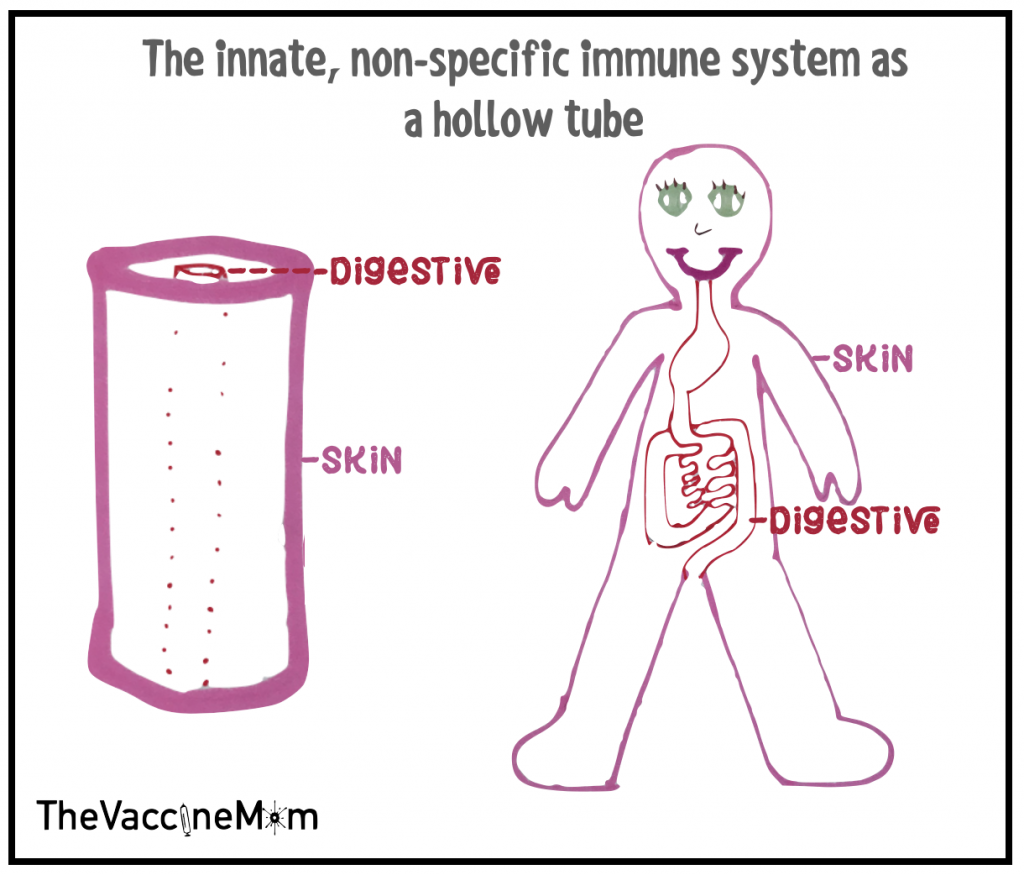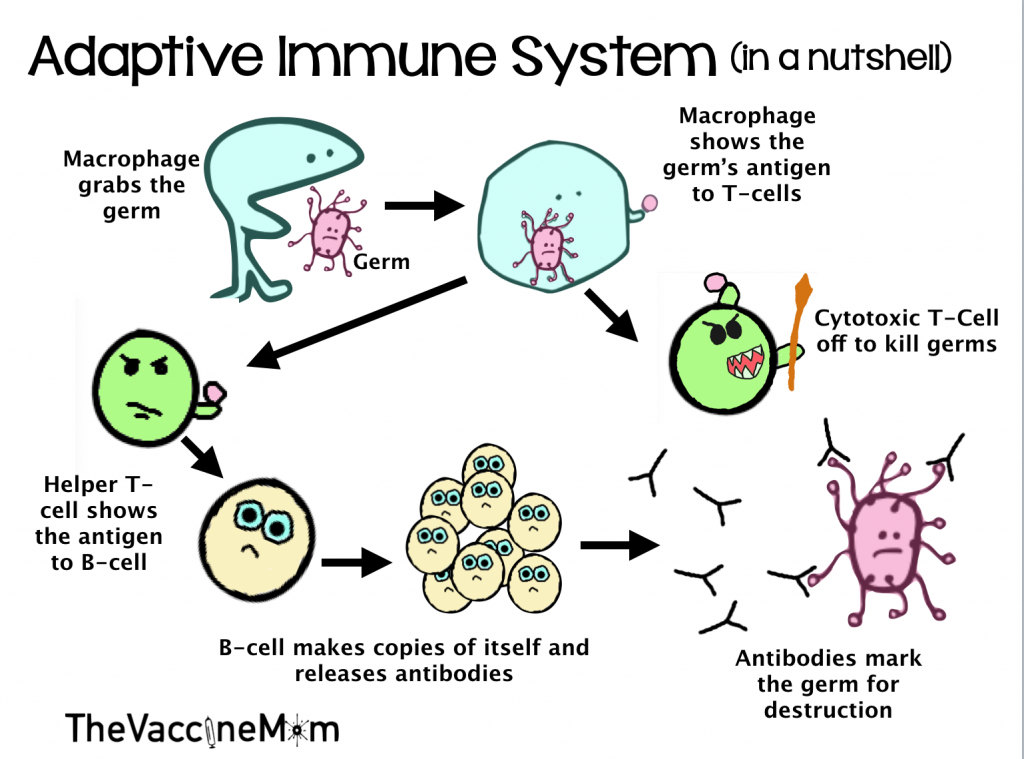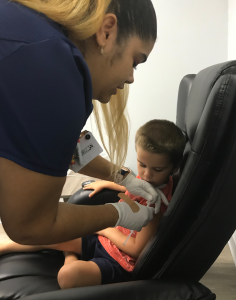The immune system (in a nutshell)
The immune system fights off germs and keeps us healthy. There are a lot of cells, chemicals, molecules, and ridiculously complex reactions and processes involved in how the immune system works.
If you want to be a vaccination wiz, it’s essential to understand why and how they work. However, you don’t have to sit with your nose in a textbook all day to get the gist.
Here’s a simple explanation of how the immune system reacts to a germ:
When it comes to the immune system, we have two lines of defense: the innate (non-specific) system and the adaptive (specific) system.
My first immunology professor left me with an analogy that I’ve never forgotten, and it’s simple: Think about the body as a hollow tube.
The outside of the tube is our skin. The inside is the digestive tract, with an entry point at the mouth and exit point at the…you know. (Let’s include the respiratory system in this, too.)
For this lesson, let’s focus on the places where germs can break past the linings of your body and get into space within. (Check out the terrible photo I drew to illustrate this.)

This tube, inside and out, protects us from the world around us. If a germ tries to penetrate the barrier, then the innate immune system reacts quickly to try to destroy it and keep it from going any further.
The problem is that some germs are too powerful for the innate system’s primitive powers, and they push past the barrier. When this happens, the innate system sets off the alarm for the adaptive system to take over.
The adaptive system takes a bit longer to respond, but it’s a lot more effective. If the adaptive system has never seen that particular germ before, you’re most likely going to get sick before it figures out how to handle it. The good news is that you’ll probably never get sick from that particular germ again. The adaptive system will remember the germ, attack, and eliminate it before it has a chance to create an infection.
The adaptive response is complicated, but you can get a good understanding by following the story of these three white blood cells: the T-cells, the B-cells, and the macrophages.

Let’s say you eat something with a nasty virus on it. (Sorry!) The virus goes to your stomach, and from there it eludes the innate immune system and gets into the bloodstream. The innate immune system pulls the alarm bell and starts yelling, “We are under attack!”
The macrophage, flowing through the bloodstream, sees the virus and says, “Hey, you’re not supposed to be here!” Then it sucks the virus into itself and holds it until the macrophage gets to the T-cell.
The macrophage shows the T-cell a part of the virus, called the antigen. An antigen is a foreign substance that the body can recognize as relating to that particular germ. The T-cells check out this antigen and then decide what to do next.
Some T-cells, called cytotoxic T-cells, go into immediate attack mode. They go out, guns blazing, and start killing as much of the virus as they can.
The other T-cells, helper T-cells, go to the B-cells and ask, “Have you seen this antigen before?”
Let’s say that the B-cell has seen that particular antigen before because your body has previously been infected with this virus. It has the memory of the antigen for that specific virus, as it once made antibodies to fight it off.
The B-cell says, “Yes, and I know just what to do!”
It starts making tons of copies of itself, and those copies make copies, and so on until there are millions of B-cells able to produce antibodies that will attack the virus.
The B-cells send out lots of antibodies that will fit the antigen on the virus like a key in a lock. The antibody attaches to the virus, which flags it for destruction, and all of the virus is destroyed.
All goes back to normal again, and the antigen-specific memory cells continue to circulate the body waiting for their enemy to come once more.
It’s because our bodies can make memories of diseases that we tend not to get sick with the same disease or strain of disease twice. The only problem is that the body must see the germ at least once before it can remember it. So, you either have to catch the germ and get sick for your body to see it, or you have to teach your body what the germ looks like through vaccination.
With vaccination, you don’t get sick.
When you get a vaccination, your body gets either a part of a germ, a killed germ, or a severely weakened germ. All of these viruses or bacteria are not able to cause disease. Without getting sick, your body fights off the antigen just as it would naturally. Then it stores the memory of that specific germ should it ever enter your body from the environment.
The immune system is quite amazing. We are exposed to so many germs every day that are stopped very quickly by our first line of defense. For those few that get through, the body’s capability to eliminate and remember disease is exceptional.
Unfortunately, there are some diseases that our bodies have a much harder time handling. For a lot of those diseases, we are lucky to have vaccines. We have the technology to protect us from these germs by teaching our immune systems to recognize them.
Don’t risk getting sick and spreading disease to others. Help your immune system out and stay up-to-date on your vaccinations!


